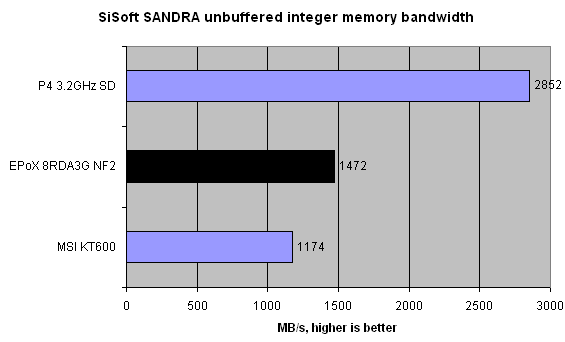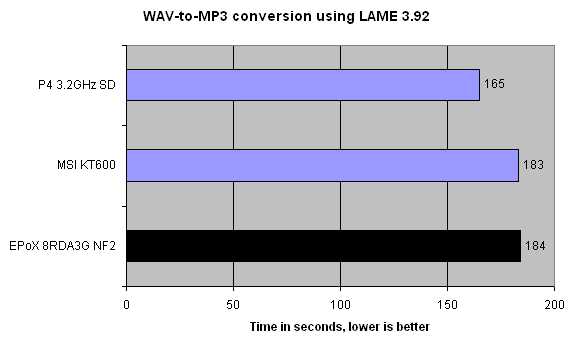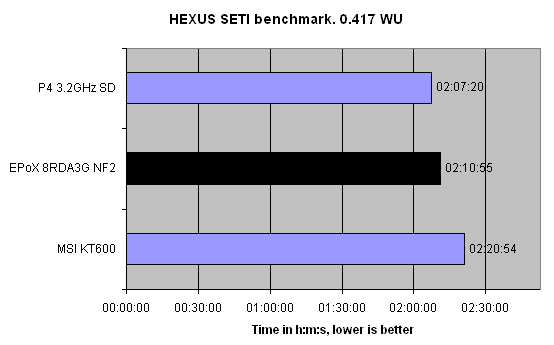Benchmarks I
VIA's KT600 chipset and Intel's super-aggressive Springdale will provide the immediate competition. EPoX's boards are usually in the upper echelons of performance for any platform, so the 8RDA3G's performance is indicative of a well-tuned nForce2 Ultra 400.

Ignoring the P4 setup for a second, we see that the nForce2 Ultra 400 is reckoned to have around 25% more unbuffered bandwidth than VIA's single-channel KT600. The true efficiency of the memory controller(s), buffer depth, etc, are not taken into account. That's why real-world benchmarks can sometimes contradict results obtained via SANDRA's benchmark.

With an XP3200+ CPU sitting in the socket, the EPoX 8RDA3G turns in an impressive 63.31s time for our Pifast calculation to 10m places. Lots of CPU speed and masses of low latency bandwidth produce the lowest times. We now wonder exactly what kind of times the new Athlon64 will produce. Roll on September 23.

It was interesting to note that the EPoX fell just a touch behind the VIA KT600 board. We wouldn't read too much into it, really. Another case, though, of the P4 reigning supreme.

The nForce2's dual memory channels have always loved the SETI benchmark. The work unit, with a typical 0.417 Angle Range, takes almost 10 full minutes less on the EPoX than on the MSI VIA KT600. PAT-enabled Springdale power ensures a P4 lead in every benchmark thus far.









